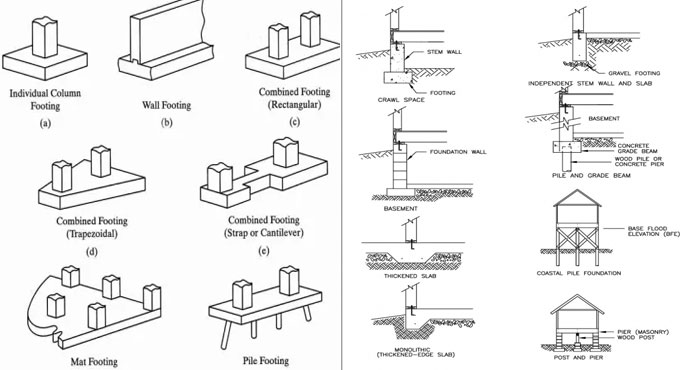
Types of Footings on the basis of Structure
A foundation alias base is the significant portion of an architectural structure that relates it to the ground as well as delivers the loads from the structure to the ground specifically to the soil, rock or piles. The footing is constructed with the purpose of supporting the foundation and resist settling. The footing compacts the soil and gives rise to settlement. The amount of settlement is based on several factors.
The structural and nonstructural components are significantly affected by excessive & differential settlement. So, it is recommended to stay away from or lessen differential settlement. In order to lessen differential settlement, the load of the structure must be distributed in a consistent manner.
Normally, footings provide support to vertical loads that should be employed concentrically to get rid of unequal settlement. It is also possible to find out the capacity of footings on the basis of the depth of footing. The sufficient depth should be maintained for footings to attain the necessary soil strength.
Types of Footings: Generally two types of footing are found which range from strip footings under walls and single footings under columns.
Common footings are classified as follow:
1. Individual column footing: This footing is also known as isolated or single footing. It is available as square, rectangular or circular shapes with consistent thickness, stepped, or sloped top. This type of footing is very cost-effective. The general type of individual column footing comes as square of rectangular having consistent thickness.
2. Wall footing: Wall footings are best suited for structural or nonstructural walls. This footing contains limited width and a continuous length under the wall.
3. Combined footing: It is based on two or three columns not in a row and appears as either rectangular or trapezoidal in shape on the basis of column. When two isolated footings are connected with a strap, the footing is known as a cantilever footing.
4. Mat foundation: Mats belong to big continuous footings which are generally arranged under the whole building area to support all columns and walls. Mats are mostly found in the situations like the soil-bearing strength is low, column loads are intense, single footings are unusable, piles are not utilized, or differential settlement must be lowered through the whole footing system.
5. Pile footing: Pile footings belong to deep pads which are applied to connect a group of piles jointly as well as support and transfer column loads to the piles.
To learn the design process of these footings, go through the following construction article onlinecivilforum.com


